The concept is borrowed from software development where a sandbox “is an isolated testing environment that enables users to run programs or execute files without affecting the application, system or platform on which they run” (Rosencrance, 2018)
In the world of business, a sandbox environment is a space where people from different disciplinary backgrounds are brought together to discuss and test solutions to complex problems in a controlled and risk-free environment (or frame). Check out David Clarke’s blog, ‘The Serious Business of Sandbox Exercise‘ for a full description of the practice.
A related concept is a regulatory sandbox which “is a methodological approach to potential relaxation of regulatory requirements that build in more testing and feedback through a safe innovation zone.” (Hagan, 2019)
Some useful concepts and terminology:
- Those who manage the sandbox activity need to hold the big picture and should be able to connect the dots between different areas of theory and practice. They often draw upon a diverse network of people from various disciplines to ensure that the right people are in the room when thematic discussions take place.
- The approach taken in conversations is usually holistic and applies systems theory. This is to ensure that ideas are not being considered in isolation from the workings of the overall system and that their impact retains a dose of realism. In discussion, Agile project management methodology principles are also applied by building simple models (or straw-men), which are then build upon through constant reiterative testing with users until the model starts holding water.
- Testing with users is an essential part of the process.
- The framing is the process by which the constraints of the simulated environment are determined and it sets the context within which the exercise is to take place. As part of framing, the controller can choose to ‘switch on or off’ real world constraints such as regulation, funding constraints and human resource capacity to test ideas and foster innovative thinking.
Potential implications for our thought experiment
When thinking innovatively about wholesome, holistic changes to the filled of education, using a sandbox exercise-type approach may be useful in deconstructing the system to understand its mechanism, dependencies and issues better. It is also helpful in testing ideas independent of ‘real world’ dependencies, such as funding, implementation and change management restrictions. These can often be specific to a certain geography, point in time and legislative configuration. By purposefully ‘switching off’ some of the systemic dependencies we are able to identify core aspects about education systems that can be critically analysed, their underlying assumptions scrutinised and their value reconsidered.
In our workshops we may choose to apply the sandbox exercise concept to our thought experiment by:
- Building the frame (i.e. the assumptions underlying the simulated environment in which the model will be built and solutions tested). That can be set before the exercise begins and the ‘rules of play’ agreed collectively with the participants.
- Determining the end-goal, or vision (i.e. defining what the outcome of the exercise is, at the very beginning). This will be agreed in collaboration with the participants and is subject to iteration as the exercise progresses and ideas evolve. The end-goal is also something that needs stress-testing with users.
- Identifying and inviting voices from a range of disciplines to participate in building the models and discussing ideas and their respective merits. Seek that participants are from a range of disciplines is essential because systems are complex and draw upon a multitude of disciplines and business areas to run in practice. Also, a mark of creativity is being able to get inspired from ideas from fields outside your own.
- Building the model of the existing system based on its component parts (the ones essential as part of the output).
- Discuss options or ideas of how to achieve the end-goal, with the model of the existing system as a starting point.
- Build models of users (or personas) with their user journeys, needs and wants. This is a form of stakeholder mapping that goes into some pragmatic aspects, beyond mere exploration of needs and wants.
- Test models and underlying assumptions with users, in a re-iterative way.
- Throughout the exercise the vision transforms into a new model of the system, with its underlying assumptions stress-tested with users.
- At the end of the exercise, an analysis is done between the starting model and the resulting one. An analysis will also be done on the tensions created in a non-sandbox environment, after restrictions are switched off. The result is a list of areas for further research and actionable recommendations that can be pursued in practice, within the industry.
Note
Participation in the ‘Designing Education’ project is currently limited to UCL students and faculty. However, if you want to get in touch regarding the project and the content of this webpage check out our Contact Us page.
Bibliography
Clarke, D., 2017, ‘The Serious Business of Sandbox Exercise’. Jan 9, 2017, Strategy+Business Website, Accessed online in Dec 2020 at https://www.strategy-business.com/article/The-Serious-Business-of-Sandboxes?gko=303ae.
Hagan, M (2019) Regulatory Sandboxes for legal services innovation. Nov 2019, Medium.com, available at https://medium.com/legal-design-and-innovation/regulatory-sandboxes-for-legal-services-innovation-7438bb9b658e
Rosencrance, L., 2018, ‘sandbox (software testing and security)’. Dec 2018, TechTarget Website. Accessed online in Dec 2020 at https://searchsecurity.techtarget.com/definition/sandbox.

nice post